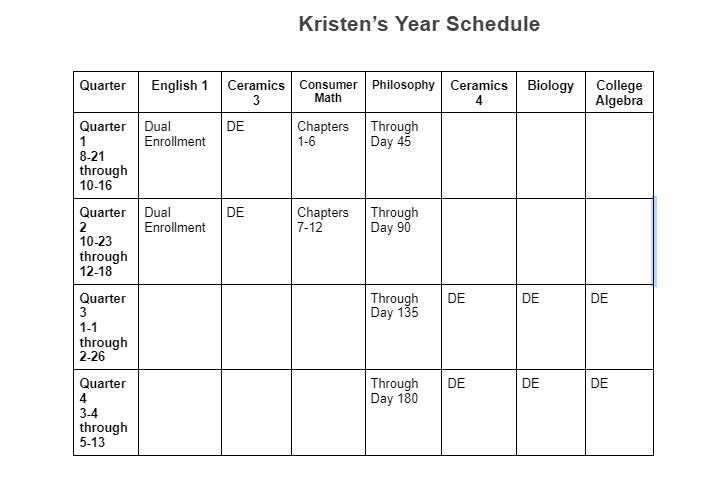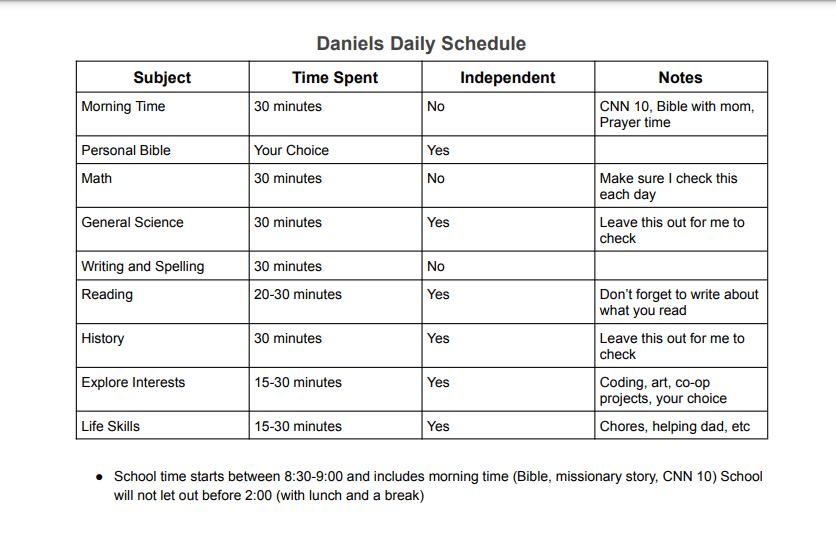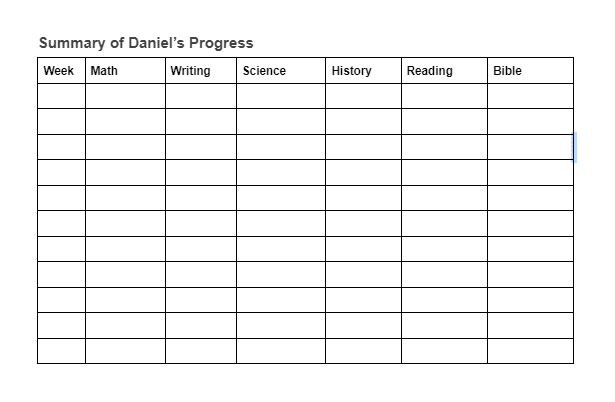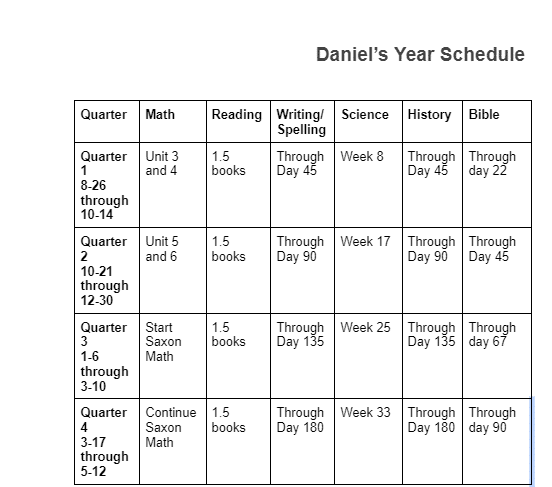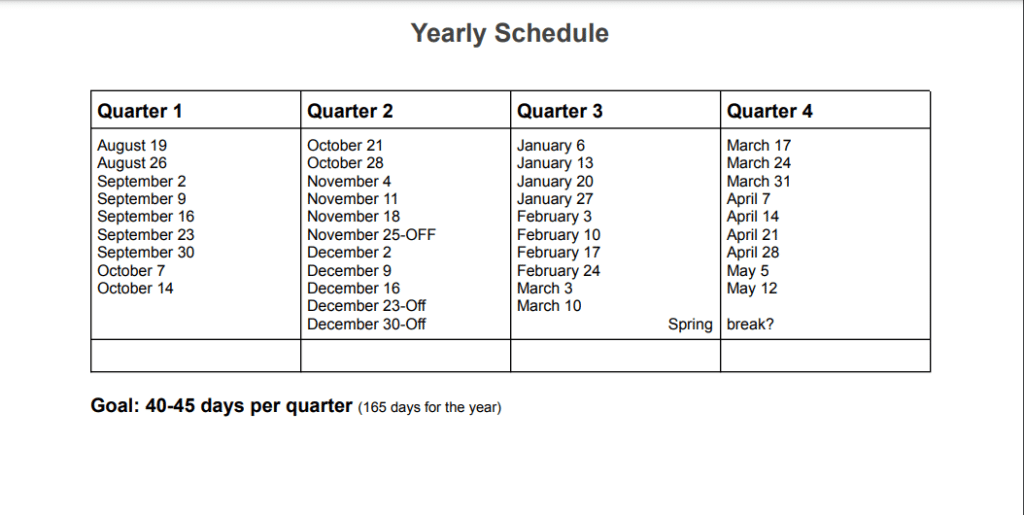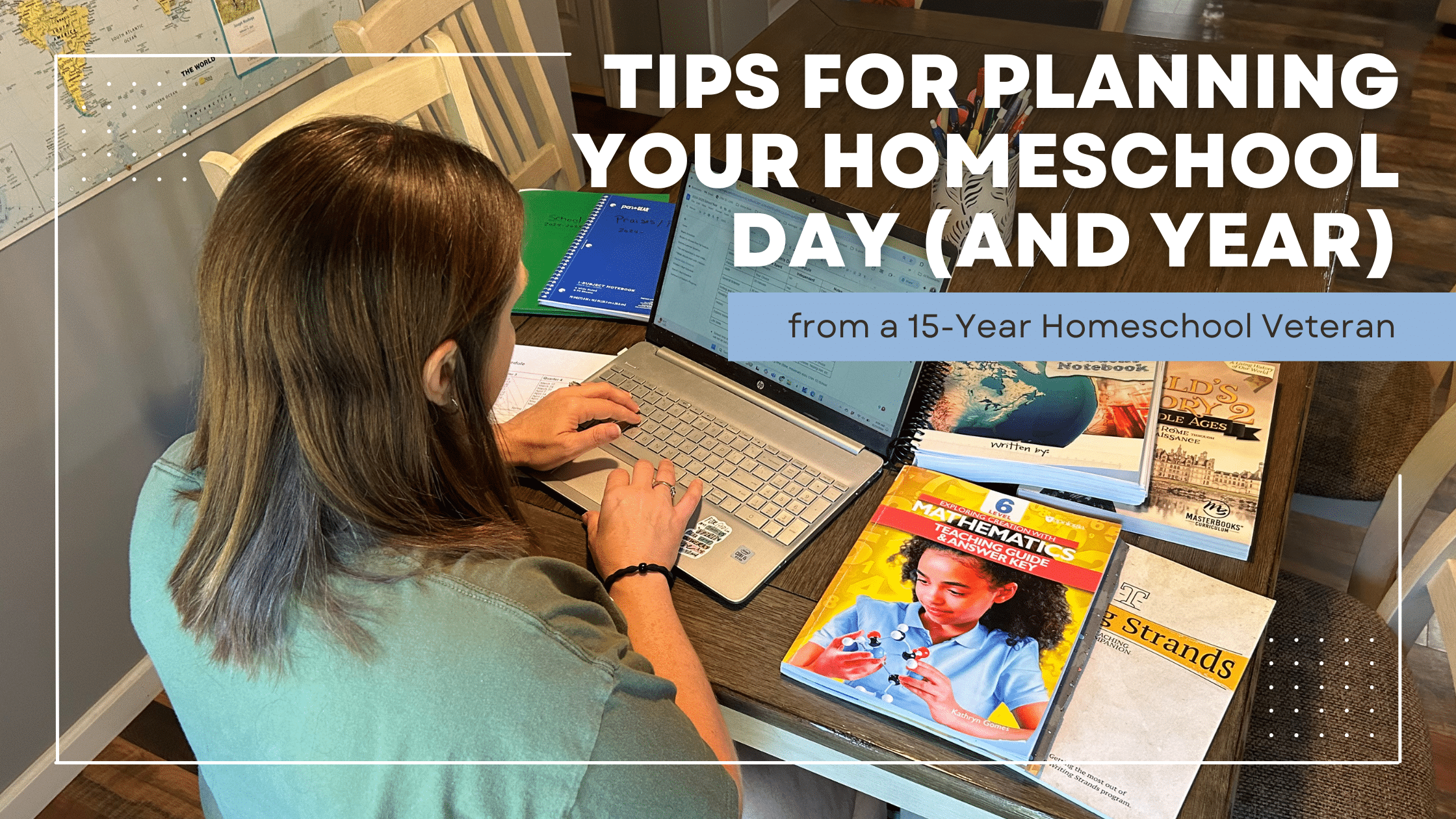
Tips for Planning Your Homeschool Day (and year!) from a 15-Year Veteran
I am writing this on the morning of our 15th first day of homeschooling. I can’t even believe that I am typing that. My 13-year-old son just came in groggily and kissed me good morning. I have honestly been dreading the first day of school this year as I have another senior. She has already told me she is not taking pictures until after she gets home from work and can “clean up.” The first day of school and homeschool planning looks very different from what it used to, but some things have stayed the same.

- First day of school pictures: When I first started this, I didn’t print off or make signs; now I do because I can’t tell preschool from kindergarten sometimes. I also try to get a picture of all three kids and one of all of us together because, around year 6, someone asked me how much I had aged since I began homeschooling…
- Donuts on the first day: I don’t remember when we started this, but it has become a tradition.
- A NOT Back to School Picnic: We do this with our homeschool group on the first Friday after public schools start. I founded our homeschool group in 2011, and we have done it every year since.
- An All About Me sheet: We make one for each kid, even the seniors! I would love to say I have kept all of these through the years, but I haven’t. I have kept most of them and pulled them out for the senior table. Seeing how much each child has changed through the years is fun.
I share these because as I reminisce on my years of homeschooling and how my homeschool day has changed, I know some moms of littles may not read this post as I have only older kids (I wouldn’t have), but for those that do, I want to share some wisdom:
Start traditions. And when you have older ones, don’t stop them. Keep them going for the younger ones’ sake. Build those relationships and keep chugging along. When my oldest went away to college last year, she enjoyed coming home for break and knowing our routine, feeling like life was “normal” and things kept going the same without her here. Homeschooling doesn’t end when you graduate a student or two. Your daily routine may change a bit, but it keeps moving on.
So, what does our daily routine and homeschool planning look like?
Morning Time
I am a working homeschool mom, so my day starts at 4:30 a.m. My goal is to get up with my husband and get started before the kids all wake-up. I am normally up, dressed, and working by the time he leaves for work at 5:30. I work from 5:30 to 8:00 (or 8:30 if I am behind). If the kids are not awake by 8:00, I wake them up, and they start getting ready for school, doing their chores, and getting breakfast. I sit at the table with my breakfast and coffee and do my personal Bible study. Depending on the day, I may also throw something in the
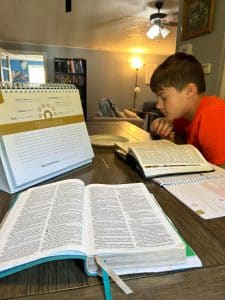
This is my favorite time of day. Morning Time for us starts between 8:30 and 9, depending on when everyone has breakfast and is ready to start the day. Our Morning Time has changed so much through the years. You can see this blog post to see more of what we have done in years past. But Morning Time, as a rule, is a time for everyone to gather together and start our homeschool day.
News
Currently, Morning Time starts with daily news. We watch The World from A to Z with Carl Azuz to get an idea of what is happening in the world.
Bible Time
We then move on to bible time. Finding a solid bible curriculum that everyone can do together is so important. Our morning time ends with “Happys and Hopefuls.” This is a time of praises and prayer requests. We include dad and the college daughter in this time as well. I send a text in our family group so everyone can share. I have loved keeping our prayer journals through the years. We started this in 2019, and now and then, I will pull out our old notebooks and share some of our old praises and requests, and we reminisce over God’s goodness in our lives.
Homeschool Planning for High School
My senior attends two dual enrollment classes at our local university two days a week. She started doing this last year, which has been a great fit for her. She also has a job, works with her horse, and trains horses multiple days a week. Her goal is to work in the field of Equine Therapy. She is only taking two classes with me this year but is working on those courses independently outside of the house in a study room at the local university.
School with her will include us checking in once a week to see how her classes are going and make sure she is on task. She will also join us for Morning Time when her work schedule allows. After that, she either goes to work or the local university to complete her schoolwork.
Homeschool Planning for Middle School
After Morning Time, the main event occurs—homeschooling my middle schooler. At thirteen, my girls were fairly independent, but my son has dyslexia, apraxia, dysgraphia, and ADHD. He works extremely hard at school, and we are easing him into independent work. Homeschooling a middle schooler looks different than when my oldest was in 7th grade, and I was juggling three kids. But, I am thankful I can focus on his needs and spend the time he needs with him.
Because of his needs, my son needs a visual schedule so he can mark off what he has completed and what he still needs to work on. Here’s an example:
This schedule allows us to have a routine for our day but also gives him control over the order in which he completes his school work and flexibility in how long he spends on some of his subjects. It also eases him into independent work and gives me time to get some work done during the school day if needed.
I track his progress in each subject a couple of times a month to ensure we are on target for the school year. This also helps me feel better when things get busy, and I worry about being “behind.” Seeing what we have accomplished is a nice reminder that we are doing okay.
I also have a plan of where I want my son to be at the end of each quarter. This allows us to be flexible and not worry about where we are weekly. If we are a bit behind one quarter, we know we need to double up the next. If we get a little ahead, we don’t have to stress if something comes up the next. Quarter planning instead of weekly or monthly planning gives us built-in flexibility. This is important to me as a working homeschool mom.
Our Homeschool Year At a Glance
This year, my son and I will attend a weekly community bible study together during the school day, spend one day a month volunteering at MOPS with our church, and participate in our local homeschool group that meets twice a month. My job requires travel in the spring, and I typically take turns bringing each kid along.
As a working homeschool mom, it is important for me to have a plan in place to know what the school year will look like. This plan also needs to be flexible. I consider all of the activities I listed above important. They include life skills, ministry, and educational experiences. Even if we never touch a school book, I count them as school days.
In our state, we do not have to turn in anything that states how many days we were “in school” or how many hours we completed. However, I aim for around 165 days a year. I keep in mind that our summers also include many educational experiences like 4-H, summer camps, vacations, and day trips. These events include historical reenactments, museums, zoo visits, and more. I have a general plan for our year where I plan our Christmas breaks, a flexible spring break, and 10 “flex days” built-in.
Plan to be Flexible
If there is one thing I have learned after 15 years of homeschooling, graduating one (almost two!) kids, being a working homeschool mom, and having a son with learning struggles, it is to plan to be flexible. Life happens when you homeschool. There will never be two homeschool days that are exactly the same. Kids get sick, the dog needs to go to the vet, a family emergency may pull you from home, or an unplanned work meeting may pull you from Algebra. Flexibility must be planned into your homeschool routine, day, and year. Since I began homeschooling, this has helped us more than any other tip or trick.
Planning to be flexible wasn’t always easy. There were seasons when life was so hectic that I didn’t know how we would make it through the week, never mind the year. I worried about our schedule, our routine, and checking off all of the boxes. One time, in a particularly busy season of health issues with one of my children, I was reprimanded by a friend who loves me. This friend prayed with me and reminded me to slow down- to pause, be flexible, and embrace the moment I was in right then. I pray that by getting a peek into our homeschool, you can learn this as well. Believe me when I tell you, there’s joy in being flexible!


